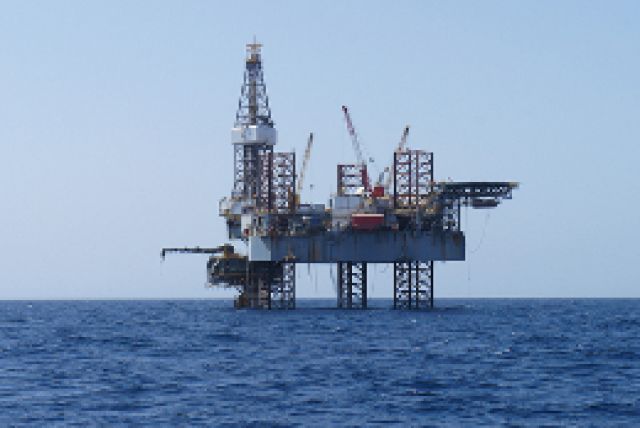
Learn more about Hart Energy Conferences
Get our latest conference schedules, updates and insights straight to your inbox.
Drilling activity in the UK could exceed 2010 levels by year-end if the number of wells spudded continues its upward climb, according to the latest report by Deloitte’s Petroleum Services Group.
For the first three quarters of this year, 46 exploration and appraisal wells have been drilled compared to 36 wells for the first three quarters of 2011, representing a 28% increase. Though figures revealed in Deloitte’s latest North West Europe Review show an increase, the most recent figure is still down compared to 2009 and 2010, when totals reached 79 and 74 wells, respectively. With three more months to complete, the report suggests this year’s numbers could surpass those reached two years ago.
The number of wells drilled in the 3Q dropped 6%, compared to the 2Q 2012, but was up 55% compared to 1Q 2012 and up 6% compared to 3Q 2011.
“While this quarter’s drilling activity showed a decrease when compared to Q2, cumulatively we can see 2012 eclipsing drilling activity in 2011,” Graham Sadler, managing director of Deloitte’s Petroleum Services Group, said in a prepared statement. “We’re still not seeing pre-recession levels of activity, but there’s a definite feeling of some confidence coming back to businesses operating [on] the UKCS.”
Interest in the central North Sea, Moray Firth basin, and West of Shetland appears to be fueling activity with all of the 3Q’s 17 wells spudded on the UK Continental Shelf, according to the report.
Aside from the potential of making hydrocarbon finds, a factor that could have played a role in companies’ decisions to explore in the UKCS are incentives offered by the UK government in efforts to jumpstart declining production, especially in the UK North Sea.
“The government’s efforts to stimulate activity through a series of tax relief schemes are starting to filter through. And, along with a sustained high oil price, smaller and technically challenging fields continue to be a much more attractive investment proposition than might have otherwise been the case,” Sadler said.
Among the new offerings were a field allowance for shallow-water, large, gas developments introduced in July, a brownfield allowance to spur development in mature fields introduced in September, and a small-field allowance.
“Five of the seven fields that have come onstream this year qualify for the newly announced field allowances,” the report stated. “The Bachhus, Islay, Athena, Ensign, and Clipper South fields all fall within the criteria set in order to be eligible for tax relief associated with the small-field allowance. In addition, Cygnus is eligible for the newly introduced shallow-water, large, gas field allowance.”
The UKCS isn’t the only region seeing increased activity compared to earlier this year. Across northwest Europe, there were 33 wells spudded in the 3Q, down 13% from the 38 drilled in 3Q 2011. By contrast, the number was up 14% compared to 2Q 2012, the report showed.
So far, this year, 19 field developments have received approval from the UK Department of Energy and the Norwegian Petroleum Directorate. For the UK, the report noted fields getting approval already have surpassed the total number for 2011.
However, the drilling activity story in Norway is not as positive. There, such activity is down 44% in 3Q 2012 from activity in the same quarter last year. No exploration and appraisal wells were drilled in the Norwegian Sea this quarter. Figures showed the number of exploration and appraisal wells dropped from 16 to nine. The decrease came despite incentives offered by the Norwegian government that include allowing companies to claim 78% of exploration costs if they encounter a dry hole, the report noted.
The report pointed to a variety of reasons for the drop. These included:
• Delays in starting new drilling operations as existing ones take longer to complete;
• Exploration targets being located in geologically more complicated plays, which add to completion times;
• Increased emphasis on well testing and seismic data acquisition in less explored areas; and
• Delays caused by new rigs being built later than planned in a tight rig market.
However, deal activity – where oil and gas fields are bought or sold – on Norwegian Continental Shelf is on course to outpace 2011 numbers, having reached 91% of last year’s total. So far, 21 deals have been made there, including asset transactions and farm-ins. The deals, the report noted, often were associated with exploration assets distributed among the Barents Sea, northern North Sea, and the Norwegian Sea. A record 47 companies applied for acreage offered in certain areas in 2012, according to the Norwegian Ministry of Petroleum.
Deal activity on the UKCS was up slightly in 3Q, by two to 16 deals compared to 3Q 2011, according to the report. When put next to 2Q 2012, deal activity for the 3Q dropped 36%. However, the report noted deal activity already has exceeded total deals in 2011, standing at 64 so far this year compared to 61 in 2011.
After the North Sea tax imposed in 2010, a lot has been done to rebuild investment confidence, which is being demonstrated in these encouraging figures, said Graham Hollis, energy partner in Deloitte’s Aberdeen office. “The UKCS is performing well against the rest of northwest Europe across all the key indicators of activity and, particularly when set against the broader economic background, provides reason for future optimism.”
Contact the author, Velda Addison, at vaddison@hartenergy.com.
Recommended Reading
Canadian Natural Resources Boosting Production in Oil Sands
2024-03-04 - Canadian Natural Resources will increase its quarterly dividend following record production volumes in the quarter.
Kissler: OPEC+ Likely to Buoy Crude Prices—At Least Somewhat
2024-03-18 - By keeping its voluntary production cuts, OPEC+ is sending a clear signal that oil prices need to be sustainable for both producers and consumers.
NGL Growth Leads Enterprise Product Partners to Strong Fourth Quarter
2024-02-02 - Enterprise Product Partners executives are still waiting to receive final federal approval to go ahead with the company’s Sea Port Terminal Project.
Private Equity: Seeking ‘Scottie Pippen’ Plays, If Not Another Michael Jordan
2024-01-25 - The Permian’s Tier 1 acreage opportunities for startup E&Ps are dwindling. Investors are beginning to look elsewhere.
Baker Hughes Declares Increased Quarterly Dividend
2024-02-02 - Baker Hughes’ dividend represents a 5% growth rate, or $0.01, over the previous quarter’s dividend.





